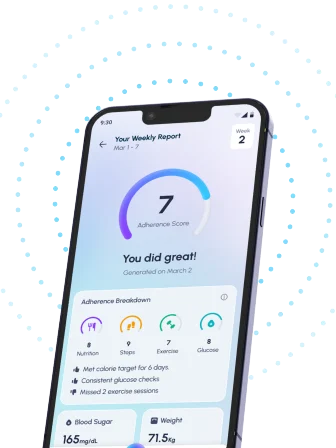Dengue fever is a common viral disease found in warm areas of the world. It can lead to serious health issues. One serious problem related to dengue is dengue shock syndrome (DSS). This condition involves a quick decrease in platelet count. Because of this, getting platelet transfusions is very important for managing dengue. This article looks at platelet transfusion for dengue. It will discuss when it’s needed, its benefits, risks, and other options available.
Understanding Dengue Fever and Its Impact in India
Dengue fever is a viral disease spread by mosquitoes. It is a big health problem in India. The Aedes mosquito carries the virus and can lead to many symptoms. These can range from a mild fever to serious hemorrhagic fever. Dengue has a major impact on India. Outbreaks happen often, which puts pressure on healthcare resources and can hurt the economy.
The problems caused by this disease are made worse by rapid urban growth, poor mosquito control, and low awareness of how to prevent it.
The epidemiology of dengue fever in India
Dengue fever is a big health problem in India, harming many patients every year. According to the National Vector Borne Disease Control Programme, India has reported more than 100,000 dengue cases in recent years. This shows how much impact the disease has. However, the true number of infections is likely much higher because of underreporting and patients who show no symptoms.
There are many reasons why dengue is so common in India. Rapid growth of cities has led to more places for mosquitoes to breed. At the same time, poor sanitation and weak mosquito control make it easier for dengue to spread. Additionally, India’s hot climate is great for Aedes mosquitoes to live and breed.
The high number of dengue patients in India shows we need better ways to prevent the disease. Early diagnosis and proper treatment plans are also important. Public health efforts, like mosquito control programs, along with greater awareness among healthcare workers and the public, are vital in reducing the impact of dengue.
The clinical manifestations of dengue fever
Dengue fever can show many symptoms, ranging from mild to severe. Usually, these symptoms start 4 to 10 days after being bitten by an infected mosquito. Common signs include high fever, headache, muscle and joint pain, nausea, vomiting, and a skin rash. Most people get better in about a week or two, with help from rest and drinking fluids.
However, some people may get severe dengue, which is also called dengue hemorrhagic fever. This serious condition can cause plasma leakage, fluid build-up, breathing problems, severe bleeding, and damage to organs. Severe bleeding symptoms, like bleeding in the stomach, are very worrying in these cases.
Quickly recognizing and treating severe dengue is very important to avoid problems and to help improve health. If you notice any warning signs, like ongoing vomiting, stomach pain, or bleeding, get medical help right away.
The Role of Platelets in Dengue Fever
Platelets are small blood cells that are really important for blood clotting. Clotting helps stop bleeding. When you get hurt, platelets stick together to form a plug. This plug seals the blood vessel and stops blood loss. In dengue fever, platelets are very important.
When a person gets infected by the dengue virus, their platelet count can go down. This condition is called thrombocytopenia. If the platelet levels drop too much, the body can’t clot blood well. This can lead to a higher risk of bleeding problems.
How dengue virus affect platelet count
Dengue virus infection can lower the platelet count. This condition is called thrombocytopenia. It happens because of different factors that influence how platelets are made and broken down. The virus can directly infect the bone marrow cells that make platelets. This leads to less platelet production.
In addition, the dengue virus causes the body to react in a way that can also destroy platelets. The immune system makes antibodies against the virus. Sometimes, these antibodies mistakenly target platelets, leading to their destruction. This immune-related loss of platelets adds to the problem of thrombocytopenia in dengue.
How severe the thrombocytopenia is can be different for each person with dengue fever. Normally, platelet counts begin to drop when the fever starts. They might keep falling for several days and could reach the lowest level during the worst stage of the illness.
The significance of maintaining a healthy platelet count during dengue
Maintaining a healthy platelet count is very important during a dengue infection. It helps prevent and control bleeding issues. When platelet counts drop too low, the risk of serious bleeding increases. This can show up as easy bruising, small spots on the skin (called petechiae or purpura), nosebleeds, and bleeding gums.
In severe cases, internal bleeding can happen. This can affect important organs like the brain, lungs, or stomach. Such bleeding can cause more damage to organs, lead to longer hospital stays, and make the illness more serious.
Because of this, healthcare professionals keep a close watch on platelet counts in dengue patients, especially during the critical parts of the illness. Keeping a healthy platelet count is key. This may involve treatments like platelet transfusion when needed. These steps help prevent and manage bleeding issues and improve patient outcomes.
Platelet Transfusion: An Overview
Platelet transfusion is a medical process. It involves giving strong platelets that come from donated blood to a patient through a vein. This procedure helps to raise the platelet count in the blood. A higher platelet count makes it easier for blood to clot, which reduces the chance of bleeding. Platelet transfusion can be crucial for saving lives in several health issues, such as dengue fever.
But, doctors do not decide to give platelets without thinking carefully. They need to look at the patient’s health, the platelet count, any signs of bleeding, and the risks of the transfusion.
What is platelet transfusion?
Platelet transfusion is a medical process where doctors give patients concentrated platelets. These platelets come from donated blood. They are specially prepared to remove other parts like red blood cells and plasma.
For this transfusion, a bag filled with platelets connects to an IV line. Doctors slowly add the platelets to the patient’s blood. The new platelets then mix with the patient’s blood, which raises the platelet count and helps the blood clot better.
Platelet transfusion is very important in cases where a person has a low platelet count. This low count can lead to serious bleeding, so the transfusion helps lessen that risk.
Criteria for platelet transfusion in dengue patients
Deciding when to administer platelet transfusion in dengue patients is a critical aspect of clinical management. Transfusion criteria often involve a combination of platelet count thresholds, bleeding manifestations, and overall clinical assessment. While a specific platelet count may trigger a transfusion in certain situations, the decision is individualized based on the patient’s overall condition.
Here is a table summarizing general criteria for platelet transfusion in dengue:
| Situation | Platelet Count (per microliter) | Bleeding Manifestations | Other Factors |
| Prophylactic | <10,000-20,000 | Absent | High-risk features, DSS |
| Active Bleeding | <20,000-50,000 | Present | Severity of bleeding |
| Before Procedures | <50,000-100,000 | Variable | Risk of bleeding during the procedure |
It’s important to emphasize that these are general guidelines and individual patient factors play a crucial role in the final decision. A thorough clinical evaluation, considering the risks and benefits of transfusion, is paramount.
The Debate Around Platelet Transfusion in Dengue Management
Platelet transfusion is a topic that doctors are still discussing in managing dengue. This transfusion can save lives, especially when there is severe bleeding. However, there are worries about using it too much and the risks that come with it.
Not every dengue patient with low platelet counts has severe bleeding. Because of this, giving transfusions just to prevent problems might not always be needed or helpful. Plus, platelet transfusion has its own risks, such as allergic reactions, infections, and lung injury.
Pros of platelet transfusion in dengue treatment
Platelet transfusion therapy is very important for treating dengue fever. It is especially helpful when patients have severe thrombocytopenia, which means they have a low platelet count. One big benefit of this therapy is that it can quickly raise platelet counts in dengue patients. This quick boost can lower the chance of severe bleeding.
Research shows that platelet transfusion therapy can greatly improve the health of dengue patients who have severe thrombocytopenia and are bleeding. By increasing platelet levels, transfusion helps control bleeding and avoid further issues. Studies have found a significant difference in bleeding problems between dengue patients who received platelet transfusions and those who did not. This shows how helpful the therapy can be.
Also, platelet transfusion may help prevent spontaneous bleeding in dengue patients who are at high risk.
Cons and risks associated with platelet transfusion
Platelet transfusion can be important, but it also has risks and problems. Like any medical process that uses blood products, side effects can happen. These can be anything from mild allergic reactions to more serious issues.
One risk of platelet transfusion is acute lung injury (TRALI). This is a rare but serious problem that can lead to breathing difficulties. Patients might also have febrile non-hemolytic transfusion reactions, which cause fever and chills. There could also be allergic reactions, which can range from mild itching to severe anaphylaxis.
There is a small chance of getting an infection through blood products, even with strict screening. We need to balance the possible benefits of platelet transfusion with these risks. It’s key to choose patients carefully and use this treatment wisely.
Clinical Guidelines for Platelet Transfusion in Dengue
Clinical guidelines for platelet transfusion in dengue patients are created to keep treatment consistent and improve patient care. These guidelines offer clear advice based on evidence. They help healthcare workers decide when to give platelet transfusions, looking at important factors like platelet count, signs of bleeding, and the severity of dengue.
The World Health Organization (WHO) and other medical groups update these guidelines often. This is to make sure they include the newest research and best practices, so patients get the right care at the right time.
When to consider platelet transfusion for dengue patients
Determining when to give platelet transfusions to dengue patients needs careful attention. You must look at their health status, how their platelet count is changing, and the risks of bleeding. The specific numbers can change based on the patient and their case, but some situations typically call for a platelet transfusion.
In cases of severe dengue, like dengue shock syndrome (DSS), serious plasma leakage, or heavy bleeding, a platelet transfusion is often needed. This helps control bleeding and avoid more problems. Even if a patient isn’t bleeding actively, those with a quickly falling platelet count might still need a preventive platelet transfusion to stop spontaneous bleeding.
Patients with other bleeding risks, such as existing health issues or those having invasive procedures, might also need platelet transfusions at lower counts. Always remember, decisions about platelet transfusions must be made case-by-case and in consultation with a qualified healthcare professional.
Monitoring and managing platelet transfusion responses
Once a platelet transfusion is given, it is very important to closely watch how the patient responds. This includes regularly checking their platelet count, signs of bleeding, and overall health. Healthcare providers also stay alert for any signs that something could go wrong with the transfusion.
Monitoring vital signs, like temperature, blood pressure, heart rate, and oxygen levels, helps catch any problems early. If there are sudden changes in these signs, they should be checked right away. It is also important to review the patient’s coagulation profile, which includes the prothrombin time (PT) and partial thromboplastin time (PTT). This helps see if the transfusion is doing a good job at improving blood clotting.
Good communication between the healthcare team and the patient, or their family, is key. Patients need to know what signs of bad reactions to look for. They should be told to report any strange feelings or discomfort right away during or after the transfusion. Recognizing and handling any adverse reactions quickly can help reduce problems and lead to better outcomes for the patient.
Alternative Approaches to Manage Thrombocytopenia in Dengue
Platelet transfusion is still a key treatment for low platelet counts from dengue. However, there are other ways to manage this issue and help recovery. These methods focus on finding and fixing the reasons for low platelets while helping the body make more platelets naturally.
Some non-transfusion treatments include using fluids through an IV and taking certain medicines. Lifestyle changes, like drinking enough water and eating a balanced diet, can also help raise platelet counts and support overall healing from dengue.
Non-transfusion therapies for improving platelet count
Non-transfusion therapies are important for managing thrombocytopenia. They aim to help the body produce more platelets naturally. These therapies are usually considered alongside or before platelet transfusion, especially when the risk of bleeding is low, or the platelet count is not very low.
One common therapy is giving intravenous fluids. This helps to raise blood volume and reduce the concentration of the dengue virus in the blood. It also keeps people hydrated, which is vital for recovery. In some cases, medicines like corticosteroids or immunoglobulins may be used to help control the immune system and lower platelet loss. However, there is limited evidence for these treatments, and they can be controversial.
Some herbal remedies and dietary supplements are said to help raise platelet counts. But scientific proof of their effectiveness is often missing, and some can interact with regular medications. It’s essential to talk to a healthcare professional before using any herbal products or supplements, especially during a dengue infection.
The Role of hydration and nutrition in dengue recovery
Adequate hydration and nutrition are very important for recovering from dengue. They help the body heal and promote overall health. When you have dengue fever, the body loses fluids because of fever, sweating, and sometimes vomiting or diarrhea. Drinking enough fluids replaces what is lost and helps to keep your body temperature, blood pressure, and other functions steady.
In addition to hydration, eating a balanced diet is also key. It gives your body the energy and nutrients needed to fight the infection and heal. A diet full of fruits, vegetables, and lean proteins is best. This type of diet can boost your immunity and provide important vitamins and minerals for recovery.
Hydration and nutrition alone can’t “cure” dengue fever, but they are vital for supporting the immune system. They can help lessen the symptoms’ severity and duration, making recovery faster and easier.
Navigating the Challenges of Platelet Transfusion
Platelet transfusion can save lives, but it comes with challenges. These include making sure there is enough safe blood available, especially when managing dengue. It’s important to have strong blood donation programs and good transfusion services.
We must also think about the ethics. We need to weigh the benefits of platelet transfusion against any risks. It’s crucial to respect patient choices and provide fair access to this important resource.
Logistics of platelet donation and transfusion in India
India has special problems regarding how platelets are donated and transfused. The country sees many cases of dengue fever. This leads to a higher need for platelets during outbreaks. Blood banks and hospitals can get overwhelmed during these times. To solve this problem, a clear plan is needed to provide safe and enough platelets when they are needed.
A big part of this plan is to encourage voluntary platelet donation. Educating people about how important it is to donate platelets, especially during dengue outbreaks, can help get more donors. Also, we need better systems for collecting and processing platelets. This means setting up more facilities where platelets are taken from donors while giving back the rest of the blood.
Moreover, improving the cold chain for storing and moving platelets is very important. Keeping platelets at the right temperature helps them stay effective and safe. Dealing with these logistical issues is crucial so that patients can get the life-saving platelet transfusions they need, especially during times of dengue fever.
Ethical considerations in platelet transfusion decisions
Ethical issues play a big role in decisions about platelet transfusion, especially when treating dengue. It is important to weigh the possible benefits against the risks and to respect what the patient wants. A main concern is making sure that patients and their families understand what platelet transfusion involves. They need to know the benefits, risks, and other options before they agree to it.
Another important issue is how blood products are shared, especially during dengue outbreaks when there might not be enough platelets. Access to platelets should be fair and based on how serious the illness is and the need for treatment.
There are also cultural and religious views about blood transfusion that need to be thought about. These beliefs should be respected when making decisions. Good dengue management relies on clear communication, teamwork in decision-making, and an understanding approach that takes patients’ values and wishes into account.
Frequently Asked Questions on
1.At what platelet count is transfusion recommended in dengue patients?
There is no set platelet count that decides when to give a transfusion to all dengue patients. Instead, the choice relies on the risk of bleeding, other signs of illness, and whether the patient needs hospitalization. It’s best to check with a doctor for advice.
2.What are the signs that a dengue patient needs a platelet transfusion?
In addition to having low platelet counts, there are signs that show the need for a platelet transfusion in dengue. These signs include ongoing bleeding from the nose or gums, skin bleeding, or other strange bleeding issues.
3.Can platelet transfusion prevent bleeding in dengue patients?
Platelet transfusion can help stop and manage bleeding in dengue patients. This is especially true for patients with severe thrombocytopenia or dengue hemorrhagic fever. However, how well it works depends on the disease severity and when the transfusion happens.
4.How long does it take for platelet counts to recover after transfusion?
Platelet count recovery time after a transfusion can be different for each person. It mainly depends on how the person reacts to the transfusion and the way the dengue infection is going. Usually, platelet counts begin to go up within a few hours to a few days after the transfusion.
5.Are there any natural remedies to increase platelet count in dengue?
A healthy diet, staying hydrated, and using papaya leaf extract may help support you if you have low platelet counts due to dengue. This condition is called thrombocytopenia. However, it’s very important to seek medical advice.
REFERENCES
- World Health Organization – Dengue and Severe Dengue
- Centers for Disease Control and Prevention – Dengue Symptoms and Treatment
- National Institutes of Health – Platelet Transfusion in Dengue




